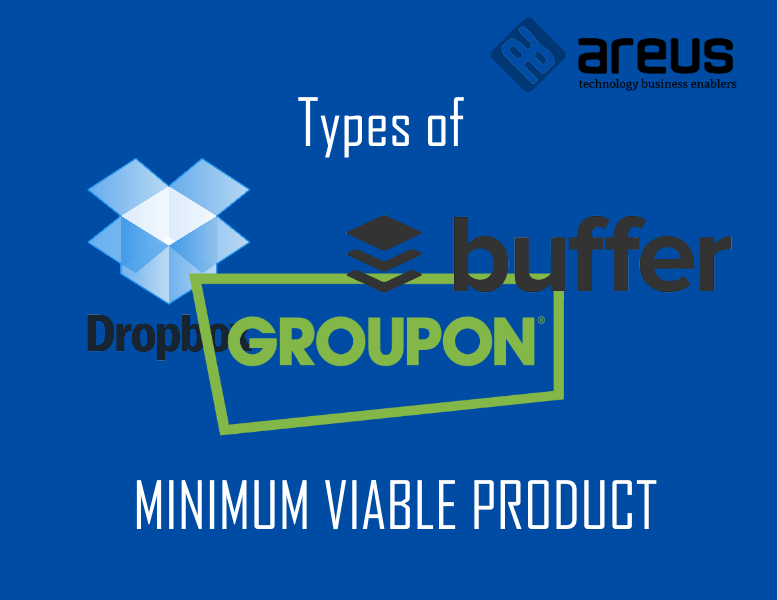
In the last post we’ve explained what is a Minimum Viable Product – the easiest tool you can build in order to test your business idea and learn from the collected feedback. MVP can come in thousand different forms. Today we will give you simple explanations and examples of the most popular forms of Minimum Viable Product. This will help you decide which solution suits your needs best.
Content-related Minimum Viable Product
The first group of MVPs is based on content. They allow you to present the idea behind your product to your potential customers or investors without the need to build a prototype of it just yet.
Landing page
Landing page is probably the most used form of MVP. This simple website with a short description of your product and a “buy” button can be a very reliable test of people’s interest. For a quick result – run an AdWords campaign on your main keywords and see how many people come all the way to the purchase step.
Example:
Buffer – one of the most popular apps for scheduling social media posts, was tested through various landing pages before the very first line of its code was written. Its author, Joel Gascoigne, created a simple website describing Buffer’s functionalities and added a “Plans & Pricing” page. Everyone who clicked on it, could be a potential subscriber. Of course, the product wasn’t ready yet. The page only contained an information that it will be launched soon and a possibility of signing up for a newsletter. Easy and effective!
Explanatory video
Another content-based Minimum Viable Product is an explanatory video. One minute long animation is usually more than enough to explain the functioning and benefits of your product. An interesting video catches people’s attention more easily than a simple description, and it can quickly go viral.
Example:
The effectiveness of MVP in the form of video has been proven by DropBox. The application, facilitating the file sharing between different devices, required a very complex program behind it. In order to test the innovative idea before investing time and money into the development, DropBox created a 3-minutes long explanatory video as their Minimum Viable Product. The subscriptions to the new platform skyrocketed overnight!
There are many other forms of content-related MVPs, such as offering pre-order packages, presenting the new idea on crowdfunding platforms or simply – conducting interviews with potential customers. All of them allow you to test the market potential without the need to invest into the actual development of your product or service.
Functionality-related Minimum Viable Product
The second type of MVP is based on functionality. It can be used when content-related Minimum Viable Product wouldn’t give you enough feedback to answer all your questions, such as how does the customer interact with the product. When choosing this type of MVP, it is important to remember that usually there is an easier way of finding out the answers, rather than building the product prototype. Here are some examples:
Wizard of Oz MVP
This form of MVP, usually used in case of testing new services, gives the customer illusion of using a fully-functional, automatized application. In reality, however, all of the behind-the-scenes actions are carried out manually.
Example:
The first step towards the founding of Groupon was based on the Wizard of Oz Minimum Viable Product. Its founder created a website allowing people to buy a discount coupon for a local pizza place. None of them knew, however, that the coupons were generated manually and sent from the author’s private address. The whole cost of this “prototype” was the time spent on setting up a WordPress website.
Concierge MVP
Concierge Minimum Viable Product is often confused with Wizard of Oz. The difference here is that the whole process is carried out manually, without any technology involved. This solution is usually applied when testing out highly-customizable services. Only after proving its functionality with first customers, the service shifts towards automatization.
Example:
Manuel Rosso, the founder of Food on the Table, wanted to provide people with customized food recipes. The proposals were to be based on their eating preferences as well as current promotions in local supermarkets. Instead of developing a robust application, first he went to the local store and persuaded some people to take part in his experiment. Then, he interviewed each of them and, based on their tastes and budget, manually prepared the first recipes. Rosso invested into developing the online platform only after making sure that the business idea has the potential of being profitable.
There are many other types of functionality-based Minimum Viable Products, such as Piecemeal, where the service is provided using existing tools; or a single-feature MVP, where the application contains only one core functionality.
Whichever the type, it is vital to keep in mind that the goal of Minimum Viable Product is validated learning – testing the ideas and strategies directly on the potential customer, instead of assuming their preferences or interests.
Next step
So far we’ve explained you what is Minimum Viable Product and what are the most popular types of it. In the following post, we will go through the main steps towards building an efficient MVP, which will maximize the learning outcome. Stay tuned!





